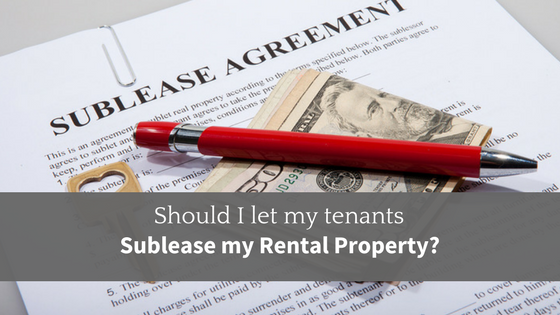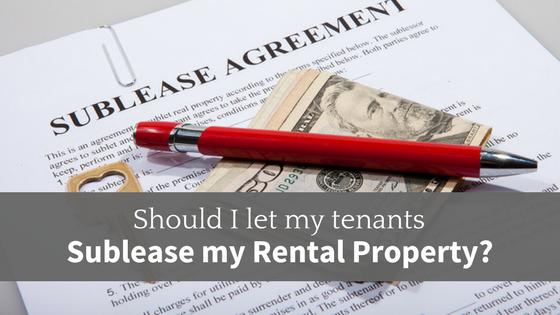Whether a beach or an office calls your tenants away for a temporary relocation, subletting their rental property is a way for renters to offset their expenses while they are out of town.
A sublet is when a tenant allows another person, not on the original lease, live in the rental property with the intent of covering all or part of the rent.
Sublets typically happen when a renter leaves for work or to travel but still wants to keep living at their rental property upon returning. Sublets are also common when a tenant wants to permanently move away before the lease term is up.
In a sublet situation, the the original tenant is still legally responsible for paying the rent to the landlord and abiding by all of the original terms of the lease.
Legal vs. Illegal Sublease Agreements
There are two types of sublets- one where the landlord is aware of and approves a sublease and one where the landlord does not. In general, it is up to the landlord or property manager to determine if they will allow their tenants to sublease their rental property.
Why are sublets against the rules in some places?
A landlord may choose to not allow sublets because they do not want an unqualified tenant living in their rental property. Although the original tenant is still legally responsible for rent payments, they will have no control over how the property is maintained while they are away.
It can also be an issue if the sub-tenant decides to stop paying rent and the original tenant is nowhere to be found to collect rent from.
An illegal sublease, that violates the original lease terms, jeopardizes the tenant’s right to return to the property and gives a landlord grounds to move forward with an eviction.
Why do some landlords approve sublets?
A landlord may choose to allow subletting because it will keep their rental property occupied and rental income steady, they will maintain a positive relationship with their tenant, it will minimize the chances of a tenant skipping out on a lease, and they will avoid expensive turnover costs.
In order to avoid the risk of your tenant selecting a bad sub-tenant, include language in the original lease agreement about the conditions of subleasing and that all subtenants must be approved by management.
How to have a good subleasing situation
To encourage your tenants to have a positive subleasing situation, provide guidance about your expectations around sublets and sublease agreements at your rental property.
A sublet or sublease agreement is a lease agreement between a tenant and a sub-tenant, where the original tenant essentially becomes a middle-man between the landlord and the sub-tenant, and assumes both landlord duties to the sub-tenant and tenant duties to the landlord. Mainly, the sub-tenant pays rent to the tenant who then pays the landlord and any maintenance requests from the sub-tenant are passed along to the landlord from the tenant.
Sublease Terms
The rental agreement signed by your tenants should have specific language about your rules and expectations around subleasing:
- Include a clause for subleasing in your rental lease agreement. The following is a simple addition to a lease that will protect the landlord in subletting situations:
Resident shall not assign this lease, or sublet any portion of the leased premises, for any part or all of the term of this lease without prior written consent of the owner/agent/manager.
- Once your tenant has found a potential sub-tenant, have them fill out an application and conduct your standard tenant screening procedure by accessing a credit, criminal and eviction report and checking employment and landlord references to make sure they are a qualified renter, before giving your approval.
- Once you have approved a sub-tenant, create a sublease agreement and have all parties involved sign it, including all tenants from the original lease and the new sub-tenant. A sublease agreement will provide extra protection for you in regards to who is ultimately responsible for rent payments, due dates and late fees, additional lease terms, and that the sub-tenant agrees to all the rules and conditions of living on your property. Some cities and states have specific regulations in regards to subleases so you should always your local laws to make sure you are in compliance.
If you decide to not allow sublets on your property, make sure you do not collect rent directly from an illegal sub-tenant. Once you collect rent money, even from someone not on the original lease, they can claim tenant’s rights to your property and the legal process to remove them from your property becomes a lot more complicated. An easy way to prevent this situation is to request your tenants pay rent online through a tenant portal that is linked to their bank account or credit/debit card.








,what if your landlord sublease the property where you pay all the bills and the lease is in your name,?